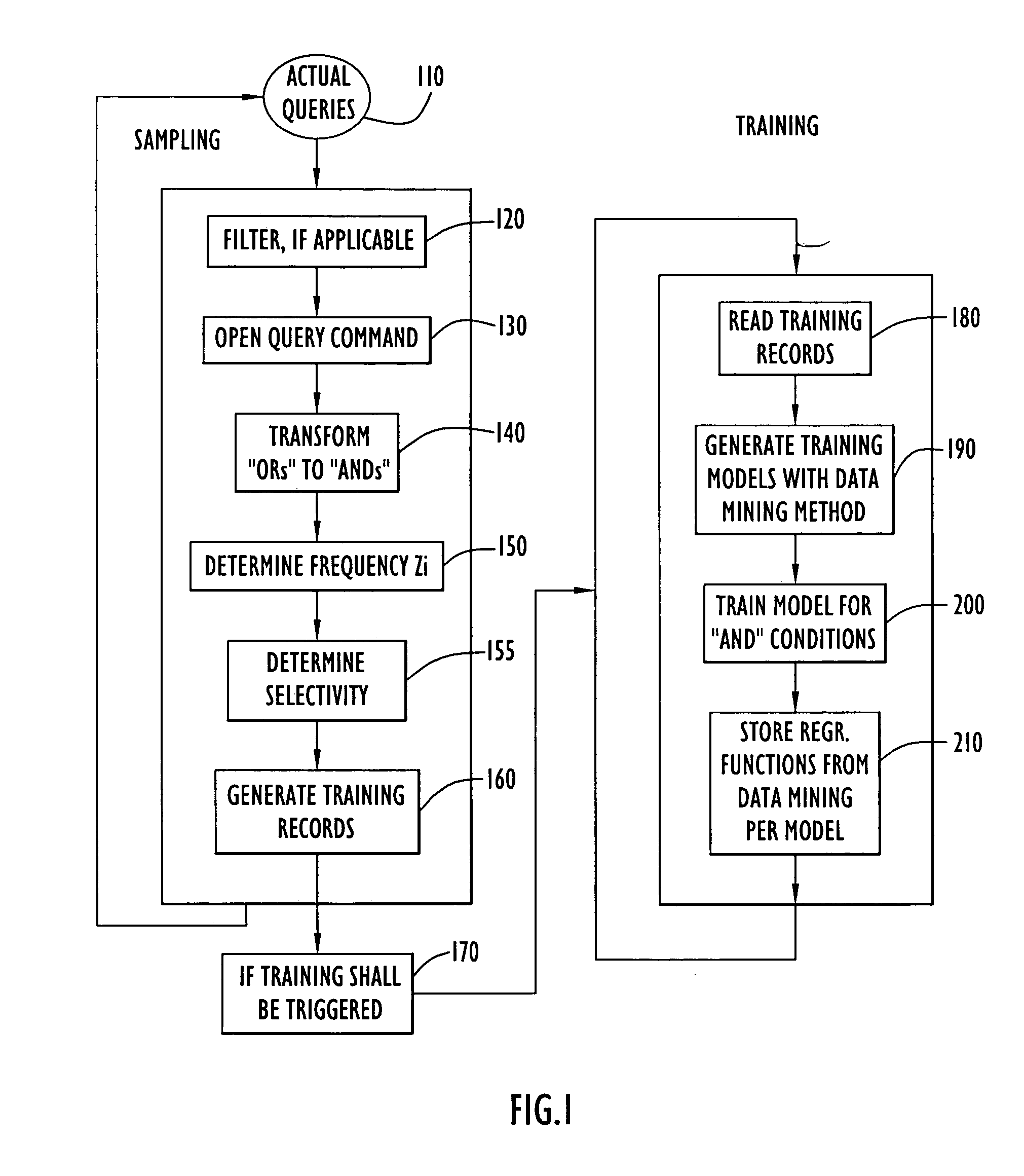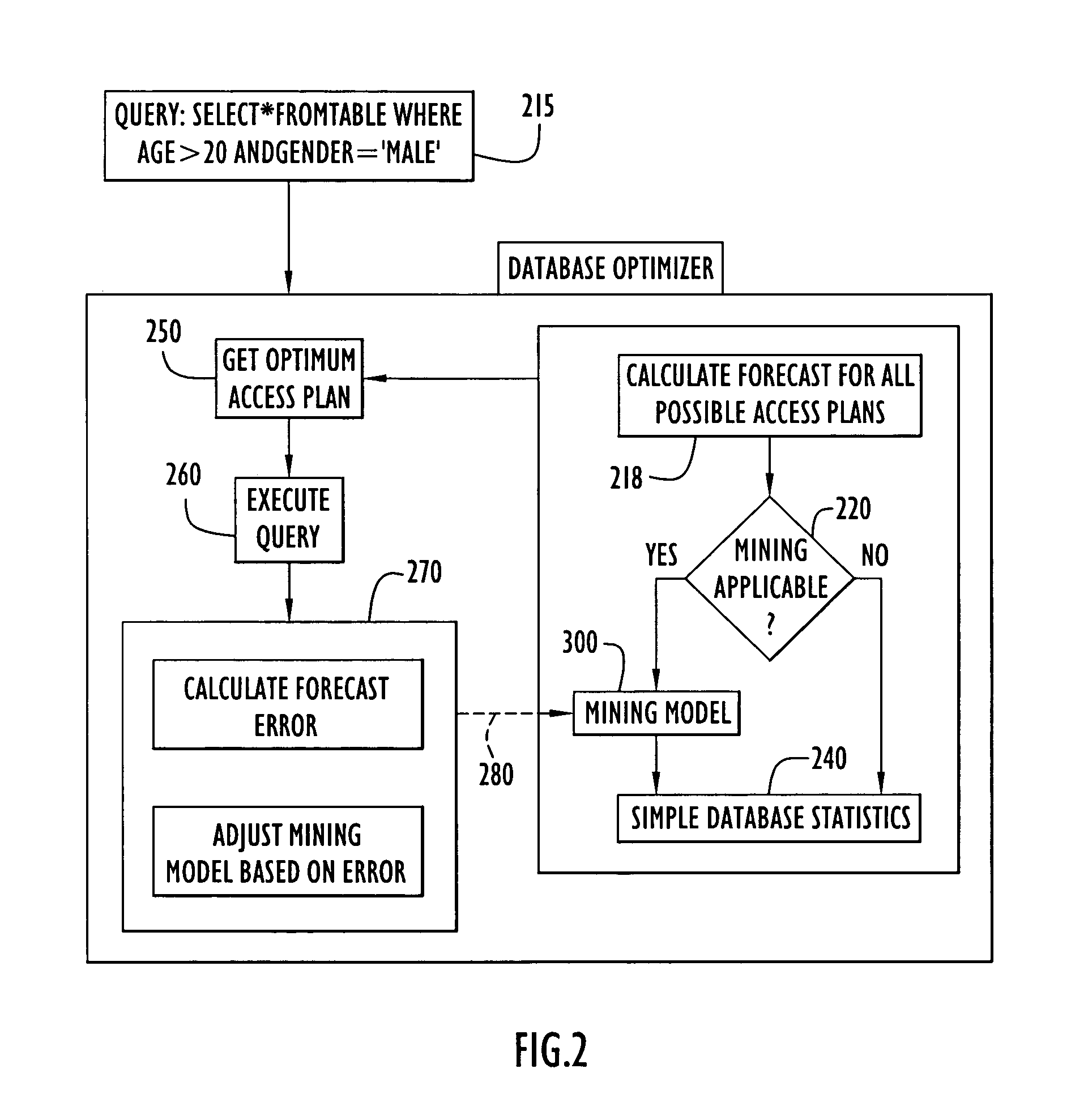Self tuning database retrieval optimization using regression functions
a database and function technology, applied in the field of relational databases, can solve the problems of limiting the ability to get good estimates in general, dynamically changing content of a database table, etc., and achieve the effects of improving selectivity or result size estimates, reducing the difficulty of database retrieval, and improving the clarity of terms such as “selectivity”
- Summary
- Abstract
- Description
- Claims
- Application Information
AI Technical Summary
Benefits of technology
Problems solved by technology
Method used
Image
Examples
Embodiment Construction
[0079]With general reference to the figures and with special reference now to the basic steps of sampling and training, an application of a preferred embodiment of the present invention method, as well as an overview of the physical structure thereof will be described in more detail.
[0080]In FIG. 1 illustrating sampling and training according to the present invention, a set 110 of SQL queries qj, j=1, . . . N, is assumed to be given as they are intercepted by an interface provided by the present invention. Such queries represent “daily life” accesses to a given database. Each query qj has one or more conditions[0081]cjk, k=1, . . . Mj like “AGE>30”.
[0082]In a step 120, the query is first checked in a filtering step, if it is usable for the purposes of the present invention. If usable, the query does not comprise the following limitative subject matter:[0083]A complex expression having SQL keywords e.g. UNION, DIFFERENCE and INTERSECT cannot be addressed by the present invention conc...
PUM
 Login to View More
Login to View More Abstract
Description
Claims
Application Information
 Login to View More
Login to View More - R&D
- Intellectual Property
- Life Sciences
- Materials
- Tech Scout
- Unparalleled Data Quality
- Higher Quality Content
- 60% Fewer Hallucinations
Browse by: Latest US Patents, China's latest patents, Technical Efficacy Thesaurus, Application Domain, Technology Topic, Popular Technical Reports.
© 2025 PatSnap. All rights reserved.Legal|Privacy policy|Modern Slavery Act Transparency Statement|Sitemap|About US| Contact US: help@patsnap.com



